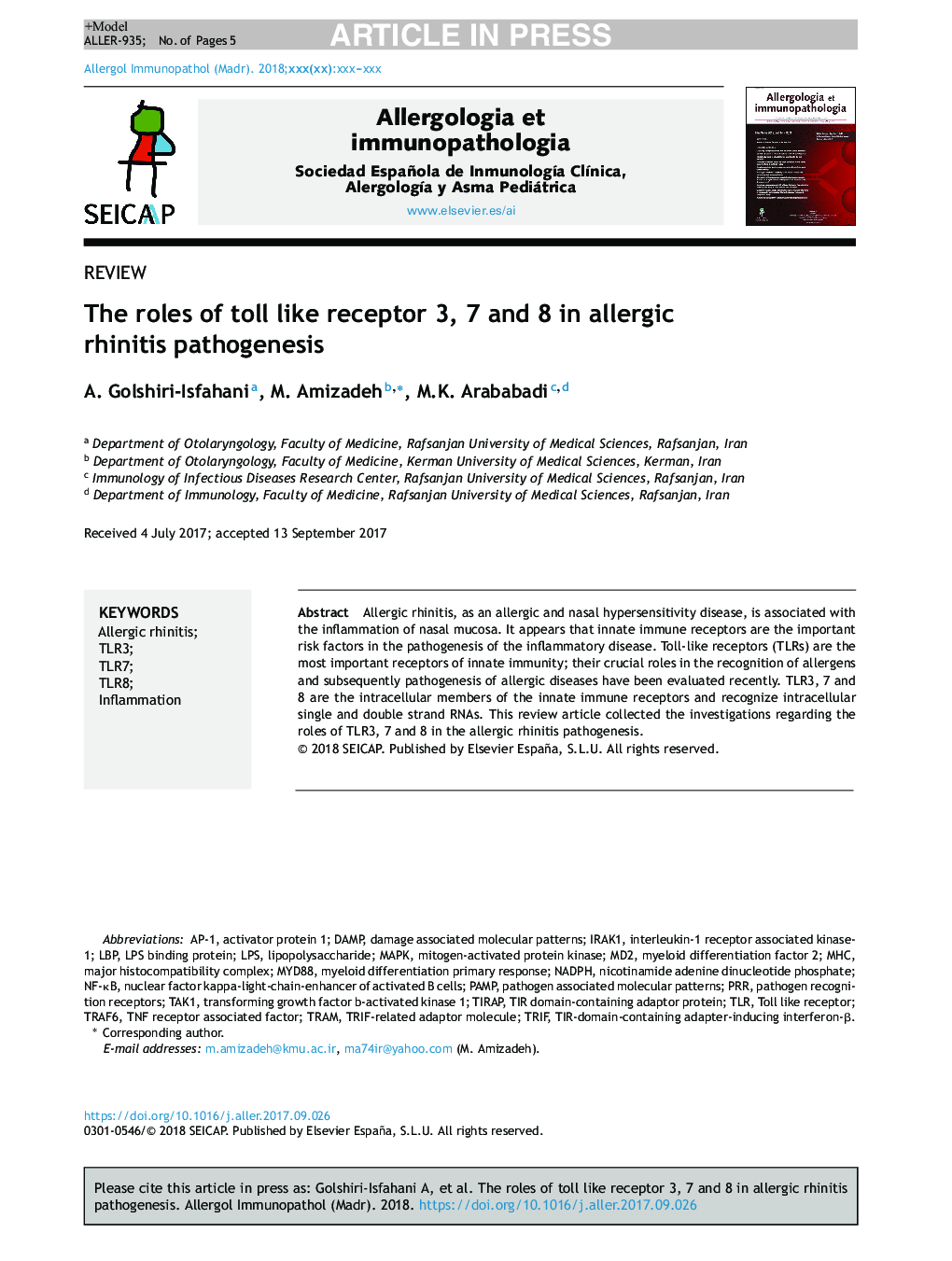| Article ID | Journal | Published Year | Pages | File Type |
|---|---|---|---|---|
| 8735911 | Allergologia et Immunopathologia | 2018 | 5 Pages |
Abstract
Allergic rhinitis, as an allergic and nasal hypersensitivity disease, is associated with the inflammation of nasal mucosa. It appears that innate immune receptors are the important risk factors in the pathogenesis of the inflammatory disease. Toll-like receptors (TLRs) are the most important receptors of innate immunity; their crucial roles in the recognition of allergens and subsequently pathogenesis of allergic diseases have been evaluated recently. TLR3, 7 and 8 are the intracellular members of the innate immune receptors and recognize intracellular single and double strand RNAs. This review article collected the investigations regarding the roles of TLR3, 7 and 8 in the allergic rhinitis pathogenesis.
Keywords
LPSTIR domain-containing adaptor proteinTLR8TIRAPMD2TLR7TAK1TLR3TRAF6IRAK1PRRTLRPAMPNF-κBMYD88LBPDAMPAP-1NADPHMAPKTRIFdamage associated molecular patternsinflammationTIR-domain-containing adapter-inducing interferon-βTRAMtoll like receptorAllergic rhinitismyeloid differentiation factor 2TNF receptor associated factornuclear factor kappa-light-chain-enhancer of activated B cellslipopolysaccharidemajor histocompatibility complexMHCTRIF-related adaptor moleculenicotinamide adenine dinucleotide phosphatepathogen associated molecular patternsactivator protein 1LPS binding proteinmitogen-activated protein kinasepathogen recognition receptors
Related Topics
Life Sciences
Immunology and Microbiology
Immunology
Authors
A. Golshiri-Isfahani, M. Amizadeh, M.K. Arababadi,
